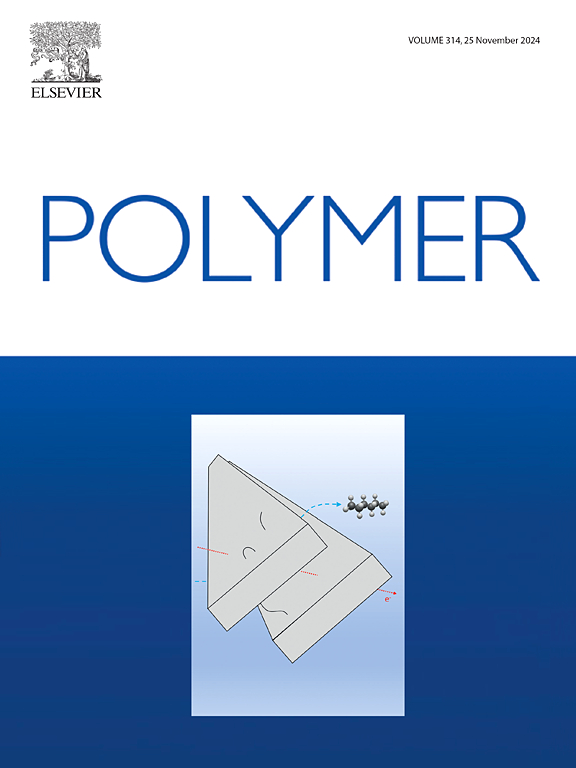Unique properties of flow-drawn epoxy fibers
IF 4.1
2区 化学
Q2 POLYMER SCIENCE
引用次数: 0
Abstract
Epoxy micro and nano fibers prepared from a solution by extensional flow, using newly-developed mechanical and electrical drawing techniques, were recently shown to exhibit remarkable mechanical stiffness. In the current study, we investigate the ultimate strength and ductility of these fibers. The flow-induced high extension is shown to increase these properties well beyond those of bulk epoxy because of the molecular orientation and rearrangement of branching polymer clusters. At the same time, due to volume conservation and tighter molecular packing, when the extension is increased the fiber diameter gets progressively smaller. The mechanical properties are predicted to correlate with the fiber diameter via inverse-square power laws, reflecting the simultaneous molecular alignment and diameter shrinkage. This size-dependence phenomenon starts at a critical diameter, unique to the resin composition and drawing conditions, leading to a steep rise in strength and stiffness for fiber diameters thinner than the critical diameter. The strength and ductility analysis is corroborated by experimental testing of epoxy fibers prepared by extensional flow and may apply to other thermoset polymers, demonstrating the potential to manipulate mechanical properties by controlling the curing and drawing processes.

求助全文
约1分钟内获得全文
求助全文
来源期刊

Polymer
化学-高分子科学
CiteScore
7.90
自引率
8.70%
发文量
959
审稿时长
32 days
期刊介绍:
Polymer is an interdisciplinary journal dedicated to publishing innovative and significant advances in Polymer Physics, Chemistry and Technology. We welcome submissions on polymer hybrids, nanocomposites, characterisation and self-assembly. Polymer also publishes work on the technological application of polymers in energy and optoelectronics.
The main scope is covered but not limited to the following core areas:
Polymer Materials
Nanocomposites and hybrid nanomaterials
Polymer blends, films, fibres, networks and porous materials
Physical Characterization
Characterisation, modelling and simulation* of molecular and materials properties in bulk, solution, and thin films
Polymer Engineering
Advanced multiscale processing methods
Polymer Synthesis, Modification and Self-assembly
Including designer polymer architectures, mechanisms and kinetics, and supramolecular polymerization
Technological Applications
Polymers for energy generation and storage
Polymer membranes for separation technology
Polymers for opto- and microelectronics.
 求助内容:
求助内容: 应助结果提醒方式:
应助结果提醒方式:


